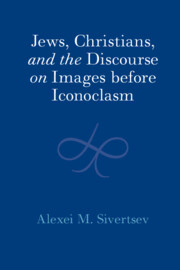Book contents
- Jews, Christians, and the Discourse on Images before Iconoclasm
- Jews, Christians, and the Discourse on Images before Iconoclasm
- Copyright page
- Dedication
- Contents
- Figures
- Preface
- Abbreviations
- Introduction
- 1 Dissimilar Similarities
- 2 Jacob’s Image
- 3 Jacob’s Dream and Relic Veneration
- 4 God’s Impossible Form
- 5 Articulating the Impossible
- Conclusions
- Bibliography
- Index
- References
Bibliography
Published online by Cambridge University Press: 01 February 2024
- Jews, Christians, and the Discourse on Images before Iconoclasm
- Jews, Christians, and the Discourse on Images before Iconoclasm
- Copyright page
- Dedication
- Contents
- Figures
- Preface
- Abbreviations
- Introduction
- 1 Dissimilar Similarities
- 2 Jacob’s Image
- 3 Jacob’s Dream and Relic Veneration
- 4 God’s Impossible Form
- 5 Articulating the Impossible
- Conclusions
- Bibliography
- Index
- References
Summary

- Type
- Chapter
- Information
- Jews, Christians, and the Discourse on Images before Iconoclasm , pp. 253 - 275Publisher: Cambridge University PressPrint publication year: 2024

